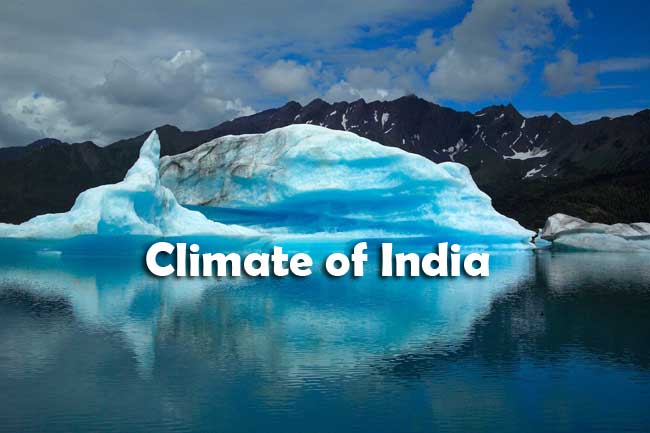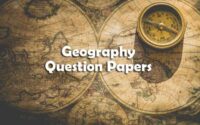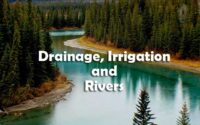Climate of India Questions and Answers
Climate of India Questions and Answers Papers pdf will be available here for download. Therefore, all the contenders can make use of this chance and start to download the Climate of India Solved Question Papers. Because by solving the Climate of India Objective Model Papers you can improve your knowledge.

Also, check for download the Climate of India MCQ Papers with Solutions from the link provided below. The MCQs Climate of India Quiz helps you to prepare well for the exam topic wise and obtain very good marks.
Therefore, go through this post thoroughly and download the Climate of India Last Year MCQs Question Papers. All these questions on Climate of India are collected from previous year papers and compiled by us.
MCQs Questions and Answers on Climate of India
1. ‘Kalbaisakhi’ is a kind of
(A) cropping pattern
(B) ritual practised in Kerala
(C) cyclonic storm
(D) None of these
2. Which one of the following is the driest region in India?
(A) Telengana
(B) Marwar
(C) Vidarbha
(D) Marathwada
3. The period by which the entire country in India comes under southwest monsoon is
(A) 1 st – 10th June
(B) 10th – 20th June
(C) 20th – 30th June
(D) 1st – 15th July
4. Western disturbances cause rainfall in the following Indian states during winter
(A) Punjab and Haryana
(B) Madhya Pradesh and Uttar Pradesh
(C) Kerala and Karnataka
(D) Bihar and West Bengal
5. Which of the following two States are prone to cyclones during retreating Monsoon season?
(A) Karnataka and Kerala
(B) Punjab and Haryana
(C) Bihar and Assam
(D) Andhra Pradesh and Orissa
6. Tropical cyclones in the Bay of Bengal are most frequent during
(A) October–November
(B) May–June
(C) January–February
(D) March–April
7. ‘Summer Monsoons’ in India bring rainfall to
(A) Southern-eastern tip
(B) Western Coast
(C) North-western India
(D) Eastern Coast
8. Which showers are favourable to the rabi crops in Punjab during winter ?
(A) Showers caused by Jet streams
(B) Mango showers
(C) Showers caused by western disturbances
(D) Kal-baisakhi
9. Heavy rainfall during the months of October and November is received by
(A) Gharo, Khasi and Jaintia hills
(B) Chota Nagpur Plateau
(C) Coromandel Coast
(D) Malwa Plateau
10. The burst of monsoons in the month of June brings rain to
(A) Kerala and Karnataka
(B) Kerala and Southern coast of Tamil Nadu
(C) Kerala, Tamil Nadu and parts of Andhra Pradesh
(D) Kerala, Tamil Nadu and Karnataka
11. Delhi gets winter rainfall due to
(A) south west monsoons
(B) north east monsoons
(C) conventional rain
(D) western disturbance
12. Which of the following is the area of lowest pressure over Indian subcontinent during the hot dry weather season ?
(A) RannofKachchh
(B) Rajasthan
(C) North-West India
(D) Meghalaya
13. The driest part of India is
(A) Western Rajasthan
(B) Jammu and Kashmir
(C) Gujarat
(D) Madhya Pradesh
14. Nagpur gets scanty rainfall because it is located with reference to Sahyadri Mountains, towards
(A) windward side
(B) seaward side
(C) onshore side
(D) leeward side
15. October and November months give more rainfall to :
(A) Malwa Plateau
(B) Chota Nagpur Plateau
(C) Eastern Hills
(D) Coromandal Coast
16. Mumbai receives more rainfall than Pune because
(A) Mumbai is on the windward side
(B) Pune is at a greater elevation
(C) Mumbai is a coastal city
(D) Pune has greater vegetation than Mumbai
17. Rajasthan revives very little rain because—
(A) it is too hot
(B) there is no water available and thus the winds remain dry
(C) the monsoon fails to reach this area
(D) the winds do not come across any barriers to cause the necessary uplift to cool the wind
18. Which of the following does not have an influence over the climate in India ?
(A) Monsoons
(B) Ocean currents
(C) Nearness to equator
(D) Presence of Indian ocean
19. The area with annual rainfall less than 50 cm in a year is
(A) Meghalaya
(B) Leh in Kashmir
(C) Coromandel coast
(D) Konkan coast
20. Which one of the following is the wettest place in India?
(A) Mahabaleshwar
(B) Cherrapunji
(C) Udhagamandalam
(D) Mawsynram
| State and Union Territories | Forest and National Park |
| Political Geography | Climate of India |
| Transportation and Ports | Drainage, Irrigation and Rivers |
| Industries and Trade | Geomorphology |
| Mineral Resources | |
21. The South West monsoon engulfs the entire India by
(A) 5th June
(B) 15th June
(C) 1st July
(D) 15th July
22. Which one of the following coasts of India is most affected by violent tropical cyclones ?
(A) Malabar
(B) Andhra
(C) Konkan
(D) Gujarat
23. One of the regions that receives rainfall from the North–Easterly monsoon is :
(A) West Bengal
(B) Assam
(C) Kerala
(D) Tamil Nadu
24. If 20% or more area of the country suffers from rain deficits during monsoon season, it is termed as
(A) flood year
(B) drought year
(C) famine year
(D) self sufficient year
25. What is the major cause of ‘October Heat’?
(A) Hot and dry weather
(B) Very low velocity winds
(C) Low pressure systems over the Indo–Gangetic plains
(D) High temperature associated with high humidity
26. Why does the west coast of India receive more rainfall from southwest monsoon than the east coast?
(A) Unlike the east coast this coast is straight
(B) The Western Ghats obstruct the winds causing rainfall
(C) The east coast is broader than the west coast
(D) The Eastern Ghats extend parallel to wind direction
27. Though there is no single theory which can explain the origin of south west monsoon, however it is believed that the main mechanism is the differential heating of land and sea during:
(A) Winter months
(B) Summer months
(C) Cyclonic storms
(D) South-west trade wind flow
28. Which of the following causes rainfall during winters in the north-western part of India ?
(A) Western disturbances
(B) Cyclonic depression
(C) Southwest monsoon
(D) Retreating monsoon
29. The Daily Weather Map of India is prepared and printed at
(A) Kolkata
(B) Mumbai
(C) New Delhi
(D) Pune


